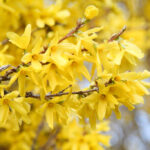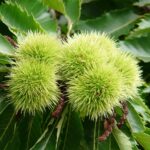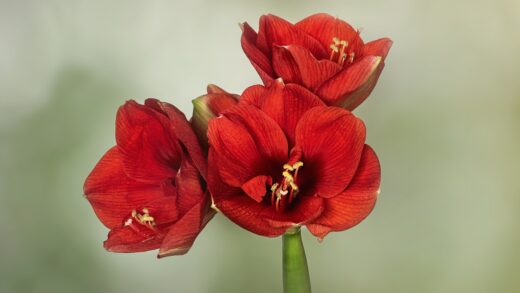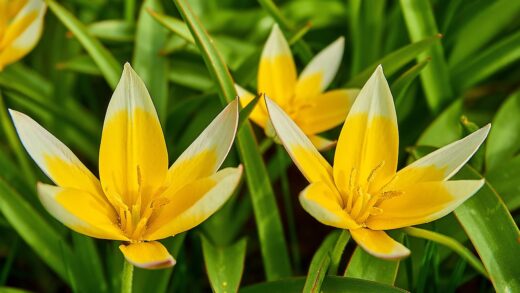Pruning and cutting back the slender parrot leaf

Pruning is a fundamental and highly beneficial practice for maintaining the health, vigor, and aesthetic appeal of the slender parrot leaf. While the plant can certainly grow without any intervention, regular trimming and pinching will result in a specimen that is significantly more attractive and robust. The primary goal of pruning this particular plant is not to control its size in the way one might prune a large shrub, but rather to encourage a dense, bushy, and compact growth habit. An unpruned plant has a tendency to become leggy and sparse over time, with long stems and leaves concentrated at the tips, which detracts from its overall appearance.
The act of pruning is a form of communication with the plant, signaling it to redirect its growth energy. When a stem tip is removed, the plant responds by activating the dormant buds located further down the stem, typically at the leaf nodes. This results in the growth of multiple new side shoots where there was previously only one main stem. This simple action, repeated throughout the plant, is what transforms a potentially gangly specimen into a lush, full mound of colorful foliage, which is the desired form for this plant when used in bedding, borders, or containers.
Pruning is not a one-time event but rather an ongoing process throughout the active growing season. It is a simple task that requires no special skills, only a pair of clean fingers or pruning shears and a little bit of time. The benefits extend beyond just improving the plant’s shape. Regular trimming also helps to remove any spent or insignificant flowers, ensuring that the plant’s energy is channeled into producing more of its spectacular leaves. It can also be used to remove any damaged or unhealthy-looking foliage, improving both the plant’s appearance and its overall health.
By understanding the basic principles of why, how, and when to prune, any gardener can easily maintain their slender parrot leaf in peak condition. This simple maintenance task pays huge dividends, resulting in a plant that looks fuller, healthier, and more vibrant. It is a key technique for anyone wanting to get the very best performance from this versatile and colorful garden favorite.
The purpose and benefits of pruning
The most significant benefit of regularly pruning the slender parrot leaf is the promotion of a dense and bushy growth habit. The plant has a natural tendency towards apical dominance, which means that the main, central stem of a shoot grows more strongly than the lateral side shoots. If left unpruned, this results in long, often spindly stems with foliage concentrated at the ends. By pinching or cutting off the growing tip of a stem, you remove the source of the hormones that suppress side growth. This action breaks the apical dominance and stimulates the dormant buds in the leaf axils below the cut to sprout, creating two or more new stems in place of one.
More articles on this topic
This process, repeated regularly across the entire plant, is what creates the desirable mounding, compact form. A well-pruned plant will be densely packed with leaves from the base to the tips, creating a solid mass of color. This is particularly important when the plant is used as an edging for a garden bed or as a component in a mixed container, where a full and tidy appearance is crucial to the overall design. A leggy, sparse plant will look untidy and will not fulfill its role as a vibrant filler or groundcover effectively.
Another key purpose of pruning is to maintain the plant’s vigor and encourage the continuous production of fresh, colorful foliage. The newest leaves on a plant are often the most vibrant and intensely colored. Regular trimming encourages a constant cycle of new growth, ensuring that the plant always looks its best. It also allows you to remove any older, faded, or damaged leaves, which instantly improves the plant’s appearance and can also help to prevent the development of diseases by removing potentially compromised tissue.
Furthermore, while the slender parrot leaf does produce flowers, they are generally small, white, and not particularly showy. For most gardeners, these flowers are considered insignificant and can even detract from the main display of colorful foliage. Pruning provides an excellent opportunity to remove these flower spikes as they form. This process, known as deadheading (though in this case, it is often ‘de-budding’), prevents the plant from expending its energy on seed production and redirects that energy back into creating more leaves, resulting in a fuller and more colorful plant.
Techniques for pinching and shaping
The most common and simplest pruning technique for the slender parrot leaf is known as pinching. This can be done easily with just your thumb and forefinger and requires no special tools. To pinch back a stem, simply locate the growing tip and pinch it off, typically removing the top one or two pairs of leaves. The pinch should be made just above a set of leaves or a leaf node. This is the easiest way to encourage branching on young plants and to maintain the shape of mature ones throughout the growing season.
More articles on this topic
For slightly thicker or woodier stems, or if you prefer a cleaner cut, a pair of sharp, clean pruning shears or scissors can be used. The principle is exactly the same as pinching. Make a clean cut just above a leaf node. Using sharp tools is important as it prevents crushing the stem tissue, which can create an entry point for diseases. It is also good practice to clean your pruning tools with rubbing alcohol before and after use to prevent the potential spread of pathogens from one plant to another.
When shaping the plant, it is best to aim for a rounded, mounding form. Step back periodically as you prune to look at the overall shape of the plant and ensure you are trimming it evenly. The goal is to create a uniform density of foliage. If you notice some stems are growing much faster or longer than others, you can prune these back more aggressively to bring them in line with the rest of the plant. This selective trimming helps to maintain the desired compact and tidy appearance.
If a plant has become very leggy and overgrown, a more significant renovation pruning or “cutting back” may be necessary. This involves cutting all the stems back more severely, perhaps by as much as half their length. While this may make the plant look bare initially, it will stimulate a great deal of new growth from the base and the lower nodes on the remaining stems. This is often a good strategy in mid-summer if the plant is starting to look tired, as it will quickly rejuvenate it for a strong late-season display.
Timing and frequency of pruning
The timing of your pruning activities is key to their success. The first pinching should be done when the plant is still young, shortly after it has been planted in the garden or potted up. When the young plant has several sets of leaves, pinching out the central growing tip will encourage it to start branching out from the base early on. This initial pinch sets the foundation for a multi-stemmed, bushy structure rather than a single-stemmed, upright one.
Throughout the active growing season, from late spring through summer, pinching and light trimming should be performed on an ongoing basis. A good routine is to go over the plant every two to three weeks and pinch back the tips of any stems that are getting too long. This regular, light pruning is far more effective at maintaining a compact shape than letting the plant get overgrown and then cutting it back hard. Consistent pinching ensures the plant is always channeling its energy into creating a dense, multi-branched structure.
If you need to do a more severe cutting back to rejuvenate a leggy plant, the best time to do this is during a period of active growth, such as in late spring or mid-summer. This ensures that the plant has enough energy and favorable growing conditions to recover quickly and push out a new flush of growth. Avoid cutting the plant back hard late in the autumn, especially if you plan to overwinter it, as this can leave it in a weakened state heading into the dormant period.
For plants that are being brought indoors for the winter, a good pruning before the transition is highly recommended. Trimming the plant back by about one-third to one-half will make it a more manageable size for an indoor space. It also removes any lanky summer growth and encourages a new flush of more compact growth that is better suited to the lower light conditions indoors. Similarly, when reintroducing the plant to the outdoors in spring, any leggy growth that occurred over the winter can be trimmed back to encourage a strong start to the new growing season.
📷 Flickr / Szerző: cultivar413 / Licence: CC BY 2.0
















